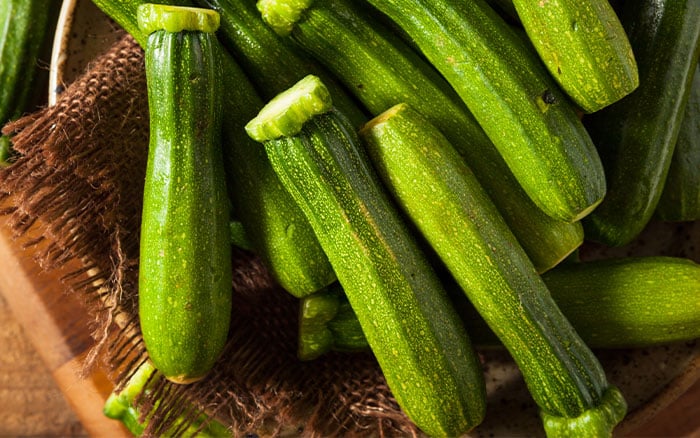We’ve all heard the government recommendation to eat ‘five-a-day,’ but have you ever wondered exactly what this entails?
From where the recommendation comes from, to how to grow your own to meet your quota you can smash your five-a-day target all month long!
What is ‘five-a-day’?
The advice to eat at least ‘five-a-day’ is based on research that found a link between this daily dose and a reduced risk of chronic diseases.
Generally, the greater the proportion of fruit and veg that makes up your daily calories, the greater the health benefit. So, it’s in our interest to be eating a variety of homegrown crops every day to live happy, healthy lives.

To hit your target, you need five 80g portions—that’s 400g in total—of different fruits and vegetables daily.
Here’s what a single portion looks like for each of a number of common home-grown crops:
- Ten strawberries
- Two-three baby courgettes
- A third of a medium turnip
- One large carrot
How do you alter your diet?
Remember that the advice is not to add a couple of portions of fruit and veg on top of your normal egg and bacon breakfast bagels.
Rather, it’s to replace some of your usual fare with more nutritious fruit and vegetable alternatives. So swap the bacon for some avocado!
Of course, by growing your own, you can get creative in how you reach this target.
Try making pizza bases out of broccoli, cakes out of chickpeas, and pancakes out of pea flour.
Since these options replace flour, they are also a great alternative for gluten-free friends.

How do you maximise your yield?
Meeting your daily quota with homegrown veg can be easy with clever planting techniques and storage that get maximum value out of your plot.
What late-cropping options are there?
First, you need to maximise your plot’s cropping potential. The majority of your crops will be in the ground by now. However, one of the keys to year-round healthy eating is to keep sowing late into the year.
Great options for late sowings for this year include:
- Salad crops: The ‘Atlanta’ variety of spinach can be planted August to September for regular harvesting throughout winter into next spring. ‘Valdor’ lettuce can also be planted late in the year for an early spring crop.
- Radishes: Winter radishes, like white ‘Mooli’ or ‘Daikon’ varieties, are an incredible addition to your cold month cropping potential. They mature more slowly than earlier varieties. But, they can stay in the ground until the first frosts in November without going woody.
- Turnips: Plant late turnips now and you can add them to your roasting pan for a nutritional cold season kick. The ‘Tokyo Cross’ F1 hybrid can be sown as late as September and be ready to harvest in 35 days.

How do you overwinter crops for a fuller yield?
Sowing crops now to overwinter is another way to get the most out of your patch. Overwintered crops will harvest earlier next year than spring-planted varieties. This frees up precious garden space for crops, like squashes and sweetcorn, that can only be planted in warm weather.

- Onions & shallots: Onion and shallot to plant in autumn include ‘Jemor’ shallots or red ‘Electric’ onions. They can be lifted from around June and stored for months.
- Beans & peas: Get a head start on next year with broad bean cultivars, like ‘Aquadulce Claudia,’ and pea varieties, like ‘Meteor’.
Getting seedlings off to a good start indoors or in a heated greenhouse before overwintered varieties are ready to harvest will make ‘relay planting’ possible. This is where you plant seedlings straight into the space left by early crops for an especially quick turnaround.
How can you use smart storage to keep your produce fresh?
If you’re inundated with homegrown produce around now, bear in mind that not only fresh but also tinned, frozen, pickled, and dried foods count towards your five-a-day.
For lots of veggies, including squashes, carrots, and onions, a cool, dark and dry place will keep them for months at a time.
For beans and peas, a fantastic solution is drying. Simply blanch them in boiling water for around three minutes before popping them in the oven at approximately 60˚C for two to three hours.
Once dry, 30g will count as one of your five-a-day.
Fruits, like raspberries, cranberries, and blueberries, are great for freezing, as are chopped herbs. Simply place them into airtight containers to protect them from freezer burn.

With these simple storage tricks, you can be exceeding your five-a-day target every day of the year for years to come.

Leave A Comment